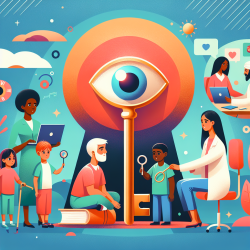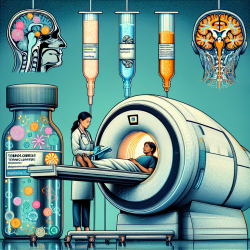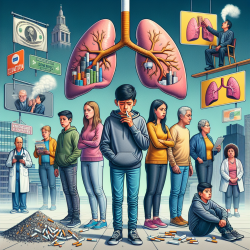As a speech-language pathologist committed to leveraging data-driven decisions to create positive outcomes for children, understanding the intersection of technology and mental health care is essential. A recent study, "Recommendations for Designing Health Information Technologies for Mental Health Drawn From Self-Determination Theory and Co-design With Culturally Diverse Populations: Template Analysis," provides invaluable insights for practitioners aiming to enhance their skills and the efficacy of their services.
The research, conducted by the University of Sydney's Brain and Mind Centre, delves into how Health Information Technologies (HITs) can be designed to better serve culturally diverse populations in nonurban areas. This study is particularly relevant for providers like TinyEYE, which offers online therapy services to schools, as it outlines critical recommendations for improving HITs based on Self-Determination Theory (SDT) and co-design methodologies.
Key Findings and Recommendations
The study identifies four main themes crucial for designing effective HITs: control, usability, affirmation, and health service delivery factors. These themes align closely with the three basic needs posited by Self-Determination Theory: autonomy, competence, and relatedness.
1. Control
- Control Over User Experience: Users should have the ability to customize key design elements such as background color, layout, and avatars. This customization is especially important for users from CALD backgrounds and those with disabilities, who may require different language options and text-to-speech functionalities.
- Control Over Data: Users must have control over their data, including who can access it and for how long. Fine-grained control over data sharing can enhance user trust and engagement.
2. Usability
- Ease of Use and Understanding: The technology should be clear, unambiguous, and free of clinical jargon. Providing definitions for complex terms can aid understanding, especially for younger users.
- Meaningful Guidance: Information should be presented in meaningful chunks, with prompts and a help section to guide users. Tailored prompts based on user responses can enhance engagement.
- Interoperability: HITs should integrate seamlessly with other apps and technologies, offering mobile usability and convenient authentication methods.
3. Affirmation
- Representation: HITs should allow users to define themselves comprehensively, including preferred pronouns and detailed demographics. This can help users feel more connected and understood.
- Value: Technologies should celebrate users' nonclinical aspects, such as their goals and strengths. Incorporating gamification elements can also enhance user motivation and engagement.
4. Health Service Delivery Factors
- Barriers to Adoption: Addressing issues like poor internet connectivity and software fatigue is crucial for widespread adoption.
- Support for Care Coordination: HITs can enhance care by maintaining comprehensive records, facilitating easier data transfer between services, and providing real-time alerts for emergency scenarios.
Implementing the Recommendations
For practitioners at TinyEYE and similar organizations, these recommendations can guide the development and implementation of more effective HITs. By focusing on user control, usability, affirmation, and practical service delivery factors, we can create technologies that not only meet clinical needs but also resonate with diverse user populations.
Adopting these recommendations can significantly enhance the therapeutic experience for children, ensuring that they receive the support they need in a manner that is both accessible and empowering.
To read the original research paper, please follow this link: Recommendations for Designing Health Information Technologies for Mental Health Drawn From Self-Determination Theory and Co-design With Culturally Diverse Populations: Template Analysis.










